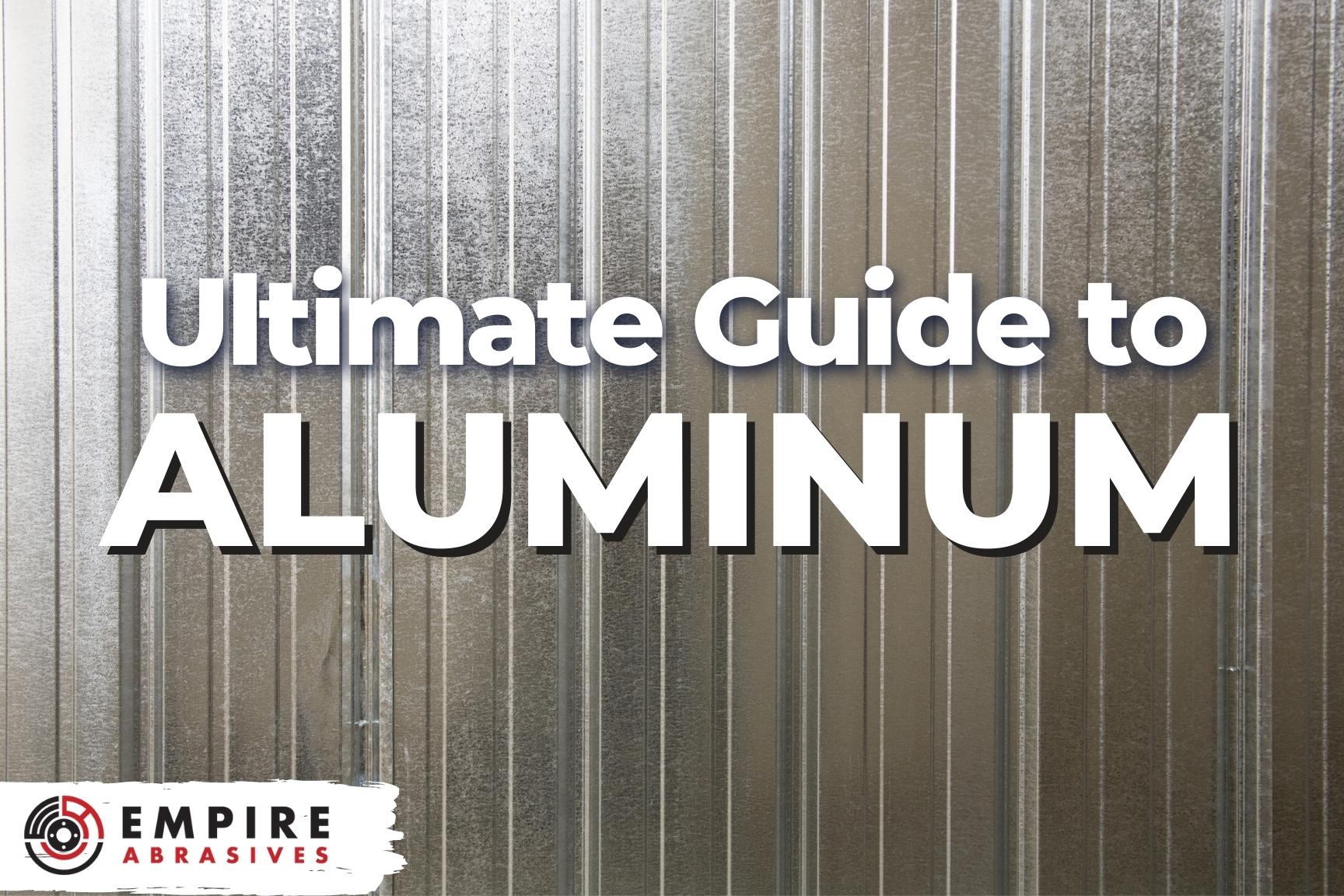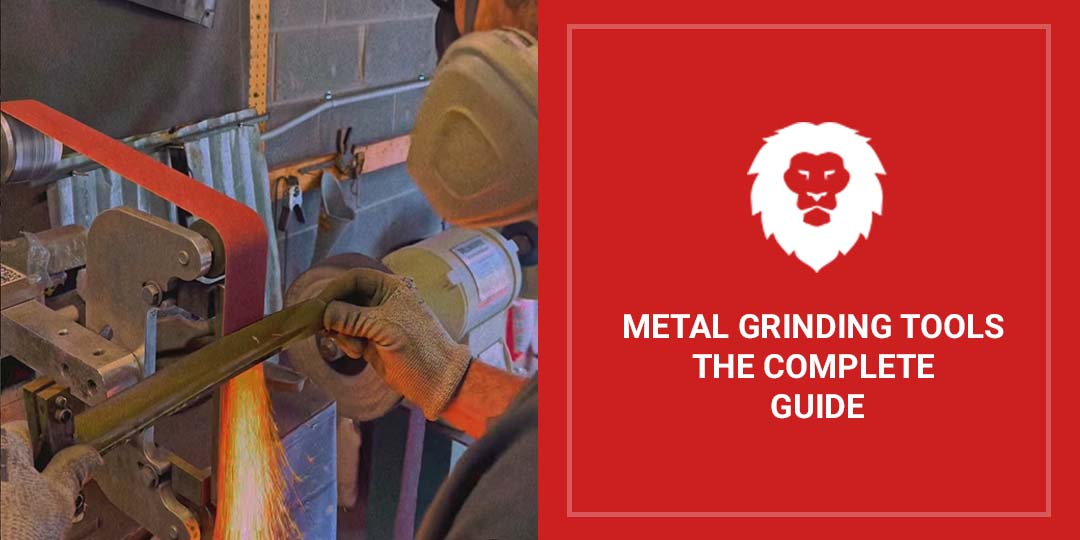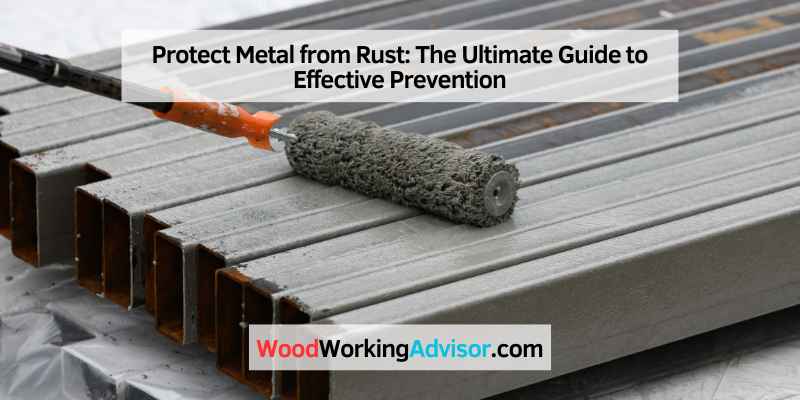Protect metal from rust by applying a rust-resistant coating and keeping it dry to prevent oxidation. Rust can deteriorate metal surfaces, leading to structural weakening and aesthetic degradation.
This article will explore effective methods to protect metals from rust, ensuring their longevity and durability. By understanding the causes of rust and implementing proactive measures, you can safeguard your metal belongings from corrosion. From utilizing protective coatings to proper storage techniques, there are various strategies to prevent rust formation on metal surfaces.
Whether it’s outdoor furniture, tools, or vehicles, knowing how to combat rust can extend the lifespan of your metal possessions. Read on to discover practical tips and solutions for maintaining rust-free metal surfaces.

Credit: www.empireabrasives.com
Understanding Rust Formation
Rust formation on metal surfaces is a common issue that can compromise the durability and integrity of various objects. By understanding how rust forms, you can take proactive measures to protect metal from this destructive process.
The Science Of Rust
Rust is the result of a chemical reaction between iron, oxygen, and moisture. When these elements come into contact with each other, a process called oxidation occurs, leading to the formation of iron oxide, known as rust.
Common Causes Of Rust
- Prolonged exposure to moisture
- High humidity levels
- Contact with saltwater or chemicals
- Damaged protective coatings
Note: This response provides a concise and structured explanation of rust formation and its common causes. Each section is distinctly highlighted with appropriate HTML syntax.
Choosing The Right Prevention Methods
Metal items are prone to rust, but choosing the right prevention method can save them from deterioration. Understanding the various options available can help protect your metal possessions for the long haul.
Types Of Rust Prevention Products
- Liquid Rust Inhibitors: Easy to apply and ideal for small metal items.
- Rust-Resistant Coatings: Provide a protective layer against moisture and air.
- Galvanization: Coating metal with a layer of zinc to prevent rust formation.
Factors To Consider When Selecting A Prevention Method
- Environment: Consider where the metal item will be used or stored.
- Budget: Determine how much you can invest in rust prevention methods.
- Durability: Choose a method that offers long-lasting protection.
Best Practices For Applying Rust Prevention
Protecting metal from rust is crucial to ensure the longevity and durability of various structures and equipment. Applying rust prevention methods, when done with the best practices, can effectively ward off rust formation and preserve the integrity of metal surfaces. The key to successful rust prevention lies in comprehensive surface preparation and precise application techniques. By following the best practices for applying rust prevention, you can safeguard metal from the detrimental effects of corrosion, extending its lifespan and maintaining its appearance.
Surface Preparation
Before applying any rust prevention treatment, thorough surface preparation is essential. The following steps should be taken to ensure proper surface preparation:
- Remove any existing rust, paint, or coatings with a wire brush or sandpaper.
- Clean the surface using a degreaser to eliminate any oil, dirt, or contaminants.
- Dry the surface completely to prevent any moisture from being trapped under the rust prevention coating.
Application Techniques
When it comes to rust prevention, proper application techniques are vital for optimal protection. Consider the following best practices:
- Use a high-quality primer specifically formulated for rust prevention.
- Apply the primer evenly in thin layers to ensure complete coverage.
- Allow the primer to dry according to the manufacturer’s recommendations before applying the topcoat.
- When applying a topcoat, use a brush, roller, or spray gun for an even and uniform application.
Regular Maintenance For Long-term Protection
Metal objects are highly susceptible to rust formation, which can gradually weaken their structural integrity and reduce their lifespan. However, by incorporating regular maintenance practices into your routine, you can protect metal from rust and ensure its long-term durability. This section will cover two key aspects of regular maintenance: monitoring for rust and reapplication of prevention methods.
Monitoring For Rust
One crucial step in preventing rust formation is closely monitoring the condition of your metal objects. Regular inspections allow you to identify any signs of corrosion before it becomes a major issue. By actively searching for early-stage rust, you can take immediate action to prevent its spread and minimize potential damage.
To effectively monitor for rust, try implementing the following practices:
- Perform visual inspections at regular intervals, scanning the entire surface of the metal object.
- Look for any discoloration, pitting, or rough patches, as these are often early indications of rust.
- Pay particular attention to areas where moisture or condensation can accumulate, such as joints, corners, and crevices.
- Use a magnifying glass if necessary to closely examine small details and hard-to-reach areas.
Reapplication Of Prevention Methods
Prevention is better than cure, especially when it comes to protecting metal from rust. Regularly reapplying prevention methods ensures a continuous barrier against moisture and oxidation, minimizing the risk of rust formation. Let’s explore some effective ways to reapply preventive measures:
- 1. Surface Cleaning: Before reapplying any rust prevention products, make sure to clean the metal surface thoroughly. Remove any existing rust using a wire brush or sandpaper, and use a suitable cleaning agent to eliminate grease, dirt, or residue.
- 2. Priming: Applying a primer helps create a strong bond between the metal surface and the protective coating. Choose a primer specifically formulated for metal, and follow the manufacturer’s instructions for proper application.
- 3. Coating Application: Once the primer has dried, apply a high-quality protective coating that acts as a barrier against moisture and oxygen. Options include paints, varnishes, or specialized rust-preventing liquids. Ensure even coverage and consider multiple coats for enhanced protection.
- 4. Regular Maintenance Schedule: Establish a regular maintenance schedule to reapply prevention methods. Factors such as the environment, exposure to moisture, and usage patterns should determine how often you should perform maintenance.
By diligently monitoring for rust and consistently reapplying preventive measures, you can effectively protect metal objects from rust formation and ensure their longevity. Incorporate these practices into your maintenance routine to safeguard your valuable metal possessions.
Special Considerations For Different Metal Types
Shielding metal from rust requires distinct considerations for different metal types. Implementing appropriate protective measures according to the specific properties of each metal type is crucial to prevent corrosion and prolong the lifespan of metal objects. Understanding the unique characteristics of various metals is essential for effective rust prevention.
Metal objects are susceptible to rust due to exposure to moisture and oxygen over time. To protect your metal possessions, it is essential to understand the special considerations for different metal types. Each type of metal has its own characteristics and requires specific care. In this article, we will explore the special considerations for aluminum, steel, and copper/brass.
Aluminum
Aluminum is a lightweight metal commonly used in various applications. It is prized for its corrosion resistance, thanks to the formation of a protective oxide layer on its surface. However, aluminum can still be vulnerable to corrosion in certain environments.
To safeguard aluminum from rust:
- Clean the surface regularly with mild soapy water and a non-abrasive sponge to remove any dirt or grime.
- Avoid using harsh chemicals or abrasive cleaners, as they can damage the protective oxide layer.
- Apply a protective coating, such as a clear lacquer or wax, to enhance the metal’s resistance to corrosion.
- Consider anodizing the aluminum, which creates a thicker and more durable oxide layer for increased protection.
- Keep aluminum objects away from areas with high humidity or salty air, as these can accelerate corrosion.
Steel
Steel is a commonly used metal in construction and manufacturing due to its strength and versatility. However, it is susceptible to rust formation when exposed to moisture and oxygen.
To prevent rust on steel objects:
- Ensure proper ventilation to minimize moisture buildup, especially in storage areas.
- Regularly inspect steel surfaces for any signs of rust or damage.
- Apply a protective coating, such as paint or a corrosion-resistant primer, to create a barrier against moisture.
- When cleaning, use a mild detergent or vinegar solution to remove dirt, followed by thorough drying.
- Consider using galvanized steel or stainless steel for increased rust resistance in outdoor or high-humidity environments.
Copper And Brass
Copper and brass are popular metals known for their unique and attractive appearance. While they are naturally resistant to corrosion, they can still tarnish or develop a green patina over time.
To preserve the beauty of copper and brass:
- Regularly clean the surfaces using a mild soap and warm water solution to remove dirt and oils.
- Apply a thin layer of paste wax or a specialized metal polish to protect against tarnishing and oxidation.
- Avoid using abrasive cleaners or scrubbing brushes, as they can scratch the metal surfaces.
- Store copper and brass items in a dry environment to minimize exposure to moisture.
- If desired, use a lacquer or clear enamel to create a barrier between the metal and the air, preventing tarnish and preserving the shine.

Credit: www.redlabelabrasives.com
Frequently Asked Questions On Protect Metal From Rust
How Can I Prevent Metal From Rusting?
To prevent metal from rusting, you can apply a protective coating like paint or varnish, use rust-resistant metals like stainless steel, keep metal surfaces dry and clean, or use rust inhibitors like oil or wax. Regular maintenance and cleaning are also crucial in preventing rust.
What Causes Metal To Rust?
Metal rusts when it comes into contact with oxygen and moisture. The process is called oxidation, and it is accelerated by factors like high humidity, saltwater, acids, pollutants, and scratches on the surface of the metal. Rust weakens the metal over time, leading to structural damage.
Can Rusted Metal Be Restored?
Yes, rusted metal can be restored. Start by removing the rust with sandpaper, wire brushes, or rust removers. Once the rust is gone, apply a rust converter or primer to prevent further rusting. Finally, paint or seal the metal to protect it from future corrosion.
How Can I Protect Outdoor Metal Furniture From Rust?
To protect outdoor metal furniture from rust, start by cleaning the surfaces thoroughly and removing any existing rust. Apply a rust-resistant coating like a metal primer and paint. Regularly clean and maintain the furniture, keeping it dry and using covers or storing it indoors during harsh weather conditions.
Conclusion
Incorporating protective coatings and regular maintenance can effectively prevent metal from rust. By following these simple methods and utilizing the right products, you can safeguard your metal items and extend their lifespan. With proper care and attention, rust can be kept at bay, ensuring your metal possessions remain in top condition for years to come.


